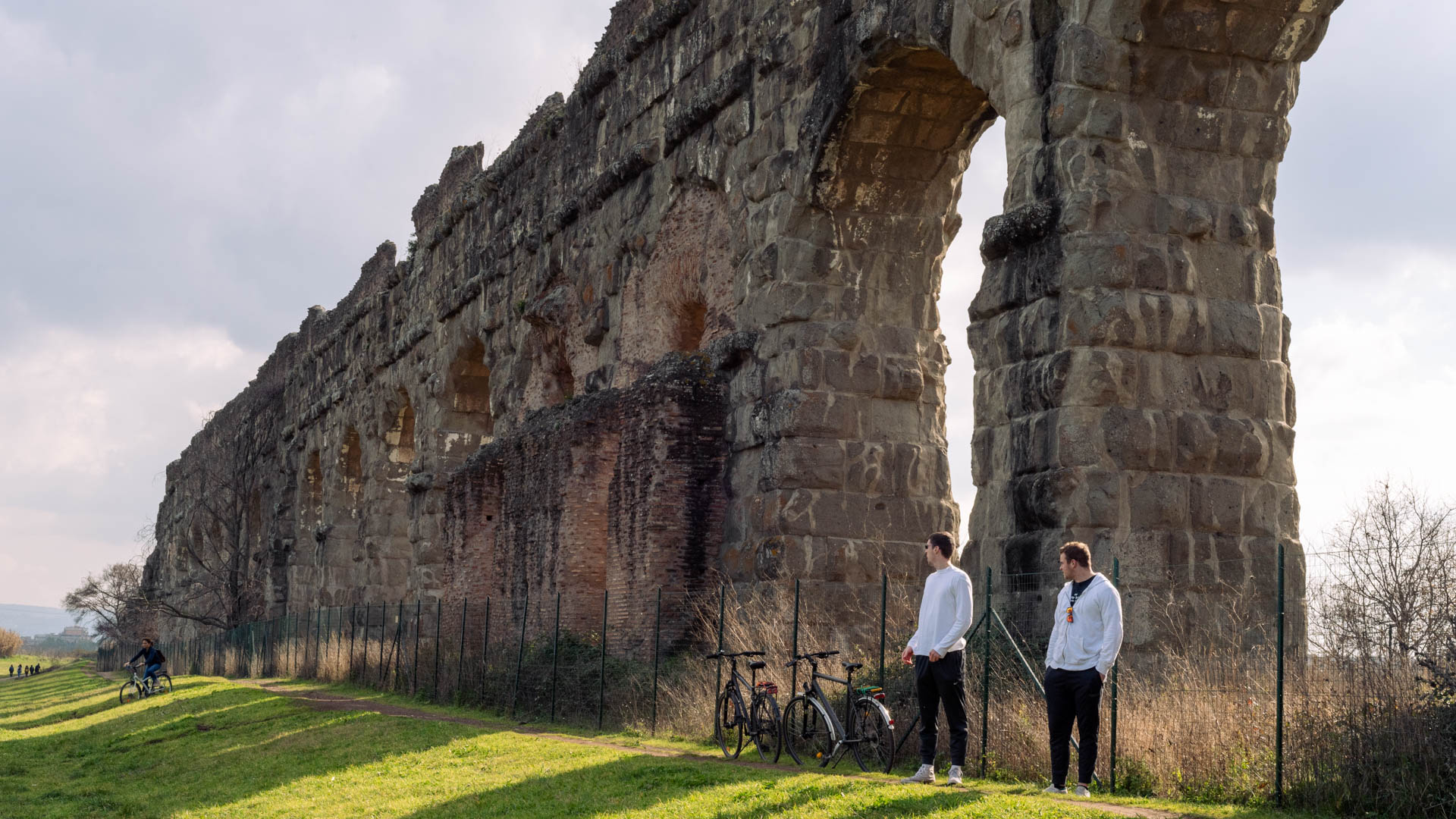The Aqueducts
— Jake Kutina
When you hear the word Rome what’s the first thing you think of? The Vatican? The Coliseum? The Pantheon? The Roman Empire? Maybe it’s none of these and your mind goes directly to the delicious pasta and pizza. I don’t blame you. Time for lunch.
What makes Rome so common in the realm of conversation is its rich history. It placed its stamp on the arts, architecture, democracy, and religion long before any of us were alive. The monuments, food, churches, and historical figures are things people know and hear about, but their significance is often still a mystery. This may be because it’s easy to view something like The Coliseum or St. Peter’s Basilica and get lost in what you see. You are in awe over the construction and that’s enough for the day. It takes some effort to know the reason it was built, the function it has served, and why it’s more than something to stare at. It’s not a bad thing to marvel over the beauty of these special structures, but it’s more meaningful when you understand it at a deeper level.
One of Rome’s best features that is overshadowed by other popular tourist attractions are the Roman Aqueducts. To understand what I saw, I did some research and I found this information from the web sites Rome Info and National Geographic. The Aqueducts are a channel that provides fresh water to highly populated areas. The water is funneled from a natural source through underground lead pipes, tunnels, troughs, and above-ground arched structures to a network of fountains throughout the entire city. Tunnels had to be dug through hills and bridges built in dips. All the water flow was by gravity. The most common source for the Aqueducts comes from various springs and lakes surrounding Rome. This water, with the help of a natural system, supplied ancient Romans with water for their homes, drinking, irrigation, public fountains, and community baths. Over about 500 years, 11 aqueducts were constructed to supply Rome with water. The first one, Aqua Appia, was built in 312 B.C.
These “fontanelle” are the most common type of fountain in Rome. Here, Tyler will teach you the correct way to drink from them. Found near the Fontana del Mascherone di Santa Sabina.
This fountain is a special version, made in the form of a wolf’s head. Of course, the wolf is a symbol of Rome. Found in the Giardino degli Aranci.
If you walk around Rome today, you will notice public fountains everywhere. Fountains of all sizes with great stone and marble sculptures. In the middle of piazzas or around popular places, do a 360 and you’re bound to notice a fountain. However, these aren’t the only types of fountains in Rome. Rome is home to around 2,500 little fountains that function as sources of drinking water. These are called “Nasoni”, meaning “Big nose”, or “Fontanelle”, meaning “little fountains”. They sit on the ground at about three feet tall. These fountains are constantly flowing with cold, potable water.
If you plan on visiting Rome, bring your favorite water bottle with you. Actually, now that I think about it, save the space. A water bottle isn’t needed. While touring the city it seems like one of these little fountains pop up whenever you’re thirsty. What’s even more realistic is that you’re passing them left and right, but you don’t notice them until you become thirsty. Either way, if you’re in Rome, take advantage of the ingenuity displayed by ancient Romans. Take advantage of the waterways that were built about 2000 years ago. Take a break. Drink more water. Do as the Romans do.


